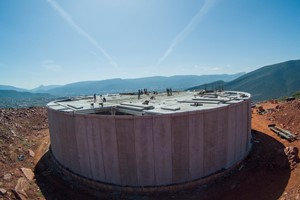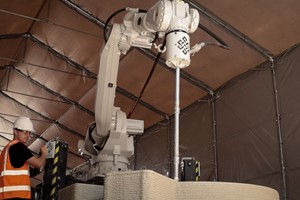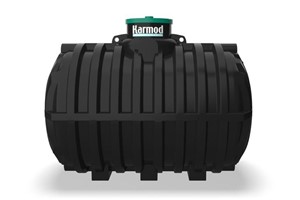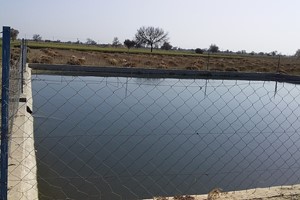The untapped potential of precast concrete in South Africa holds promise for accelerating the construction of high-quality water infrastructure. With meticulous upfront planning, the construction of prefabricated reservoirs, water towers, and water and wastewater-treatment facilities can help mitigate the nation's severe water and sanitation crisis.
Essential Planning for Success
Willie de Jager, Managing Director of Corestruc, emphasizes that the successful execution of large precast-concrete projects hinges on comprehensive upfront planning. Finalizing engineering designs, drawings, and service coordination before manufacturing the various precast-concrete elements is crucial. This requires contributions from the entire professional team, including project engineers, mechanical consultants, main contractors, and precast-concrete specialists. De Jager notes that there is minimal flexibility for changes once a precast-concrete project begins, given that the elements are manufactured to precise specifications during initial stages such as earthworks, site terracing, and foundation work.
Barriers to Entry
These projects demand extensive skills and experience across the entire precast-concrete value chain, encompassing design, manufacture, transport, and rigging capabilities. Each function plays a critical role, and any weakness can jeopardize the project. Corestruc’s systems, tailored for constructing reservoirs and water towers, require significant capital investment, limiting market entry for many potential participants and hindering the broader adoption of the technology.
The lengthy lead time from research and development to commercialisation further complicates matters. For instance, Corestruc spent approximately four years perfecting its 35-meter-high prefabricated concrete water towers, with storage capacities ranging from 1.5 Mℓ to 5 Mℓ. The company is currently constructing two such towers, adding to its portfolio of precast-concrete reservoirs and prefabricated roof structures for cast-in-place reservoirs built for municipalities. Each system has undergone extensive refinement through trial and error to achieve success.
Advantages of Precast Concrete
Despite these challenges, the benefits of precast concrete are clear. Corestruc has expedited the construction of approximately 500 Mℓ of water-storage capacity, with additional projects underway. These include an open-top water-retaining tank with an 8.5-meter wall height and a 41.71-meter diameter for a leading platinum-group metals miner.
Precast-concrete reservoirs offer significantly faster construction times. For example, Corestruc has built 10 Mℓ and 30 Mℓ reservoirs in four and six months, respectively. While precast concrete may not always be quicker than traditional in-situ methods, it ensures a strong project start by manufacturing the necessary elements during the initial construction phases. Other benefits include the high quality and durability of the final structure.
Manufactured in controlled factory environments, precast-concrete elements ensure consistent quality and reliability. The durability of concrete is enhanced using high-strength mixes, reinforcing or prestressed strands, and pre-tensioning. Sound upfront planning in these projects also reduces variation costs, and the use of high-strength concrete mixes and post-tensioning lowers construction material costs. Precast-concrete reservoirs are up to 40% lighter than those built using conventional methods, resulting in 10% to 30% savings in construction costs.
By building durable water infrastructure, municipalities save on maintenance costs over the 100-year design life of precast-concrete structures. Accurate factory manufacture optimizes material use, reducing waste. Prefabrication also allows for more efficient design of concrete element shapes, which would be too costly or complex with traditional methods.
To remain competitive, precast-concrete factories must use energy and water efficiently, reducing the carbon footprint of their elements. With rising utility costs, companies must continue finding ways to lessen their reliance on grid supplies.
Globally, prefabrication is the preferred method for constructing quality infrastructure due to its efficiency and cost-effectiveness. South Africa is still navigating a steep learning curve in the design and application of this technology. As the water crisis intensifies, innovative solutions like precast concrete will become essential for building top-notch infrastructure cost-effectively. Precast concrete offers immense potential in this regard, concludes De Jager.














